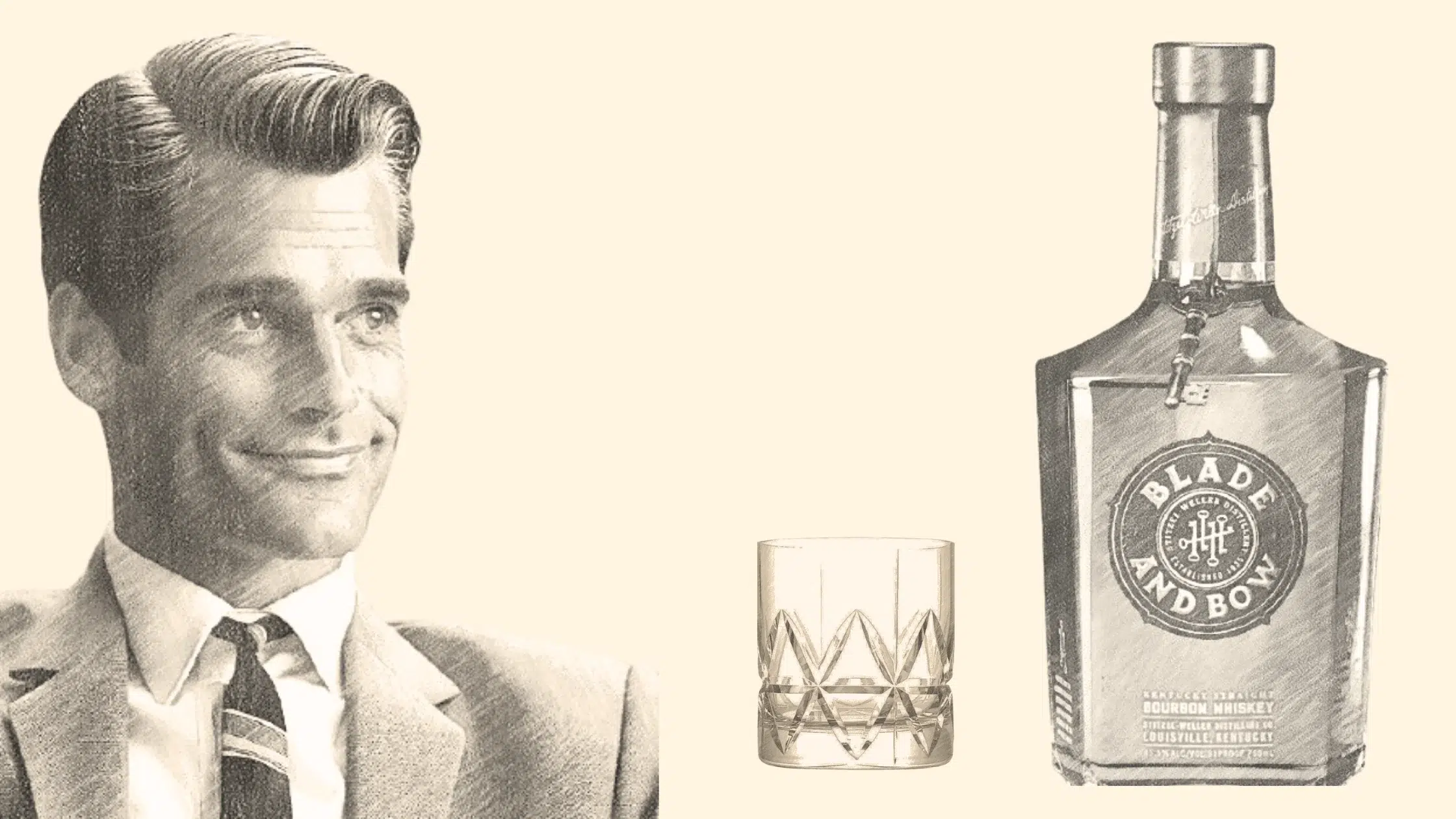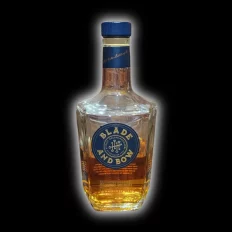Blade and Bow Bourbon is a decent introduction to traditional bourbon flavors. It’s crafted with care, focusing on age-old distilling and aging methods. The aroma is inviting, and the flavors are good, though not extraordinary. This bourbon’s appeal lies more in its heritage than in groundbreaking taste.
In this review, we’ll explore what sets Blade and Bow apart, including its distillation process, its awards, and its value for money. Whether you’re a seasoned bourbon lover or just starting out, we’ll give you an honest take on its features and the best ways to enjoy its unique yet familiar character.
In-Depth Review On Blade and Bow Bourbon
Blade and Bow Bourbon offers a decent range of flavors and aromas, thanks to its unique distillation and aging process. This bourbon, with a nod to tradition, provides a sensory experience that’s more about its distinct nose and finish than a standout palate. It’s made using a solera aging system, which adds a bit of complexity and consistency, but not dramatically so.
The aroma is pleasant, with touches of dried fruit, vanilla, and oak. The taste brings in caramel, a hint of spicy rye, and toasted nuts, leading to a smooth, somewhat lasting finish. While Blade and Bow has its moments, it doesn’t quite dazzle in its flavor profile.
We’re about to get into the nitty-gritty of the details of Blade and Bow, giving you a full picture of what this bourbon brings to the table.
Distillery: Where Is It Made?
Blade and Bow Bourbon is crafted at the renowned Stitzel-Weller Distillery in Louisville, Kentucky, a key player in bourbon history since 1935. This distillery stands out for producing exceptional bourbons and pioneering the smoother, wheated bourbon style using wheat.
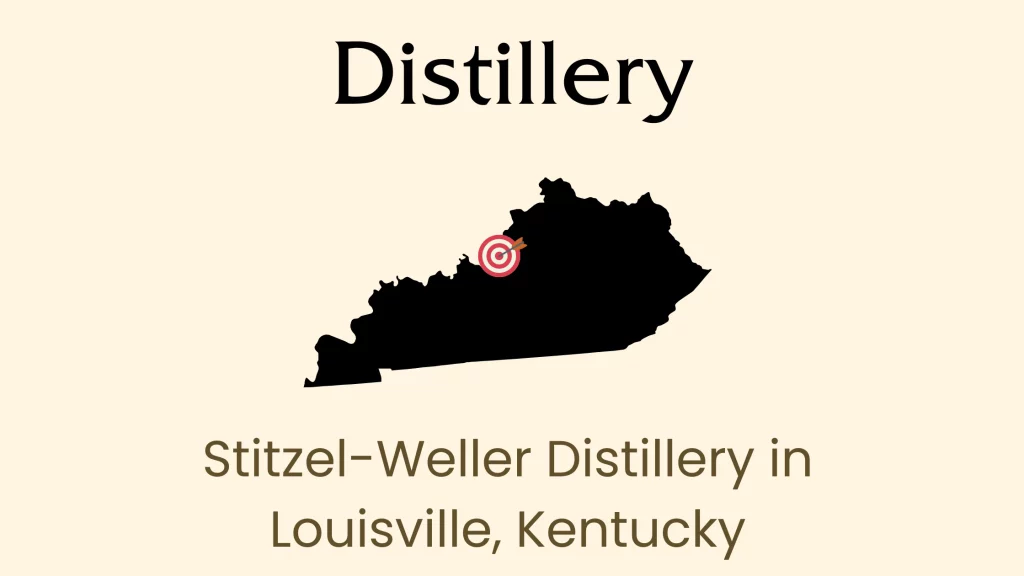
The bourbon’s distinctive flavor is shaped by a special solera aging process, blending older and newer spirits for consistency and depth. Located in the heart of bourbon country, the Kentucky climate significantly enriches its profile with deep vanilla, caramel, and oak notes. Crafting Blade and Bow at this historic site means it’s not just another bourbon; it’s a continuation of a legacy of innovation and quality in American whiskey.
Distillation & Aging: How Is It Made?
Blade and Bow Bourbon undergoes a meticulous distillation process, followed by an innovative aging technique that sets it apart. The distillation occurs in copper stills, crucial for achieving its smooth texture and removing impurities. After distillation, Blade and Bow employs a distinctive aging process known as the solera method. This system involves a continuous blend of older and younger bourbons, ensuring consistency and complexity in every bottle.
The bourbon is aged in charred American oak barrels, which impart rich flavors of vanilla, caramel, and oak. This combination of traditional distillation and innovative aging contributes to the unique character and depth of Blade and Bow Bourbon, making it a standout in the world of whiskey.
Nose: What Does It Smell Like?
I found that the aroma of Blade and Bow Bourbon is inviting and pleasantly uncomplicated. Initially, it greets you with a delightful blend of dried fruit, followed by a noticeable sweetness reminiscent of vanilla, a characteristic derived from its aging in oak barrels.
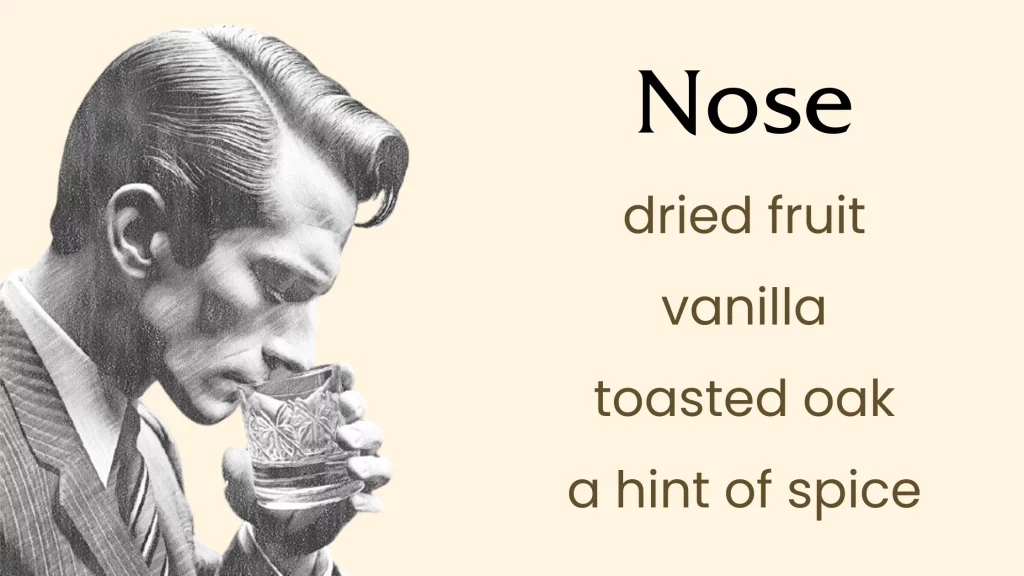
Alongside these primary notes, there’s a subtle but distinct scent of toasted oak and a hint of spice, which adds a bit more depth and intrigue to the overall aroma. This introduction to the bourbon’s scent profile is a good indicator of the aging process and sets a promising tone for the tasting experience that follows.
Palate: What Does It Taste Like?
Tasting Blade and Bow reveals a straightforward yet enjoyable flavor profile. The first sip introduces a smooth caramel flavor, seamlessly intertwined with the comforting warmth of vanilla. This initial sweetness is soon complemented by a layer of subtle dried fruit flavors, echoing the aroma you first encountered.
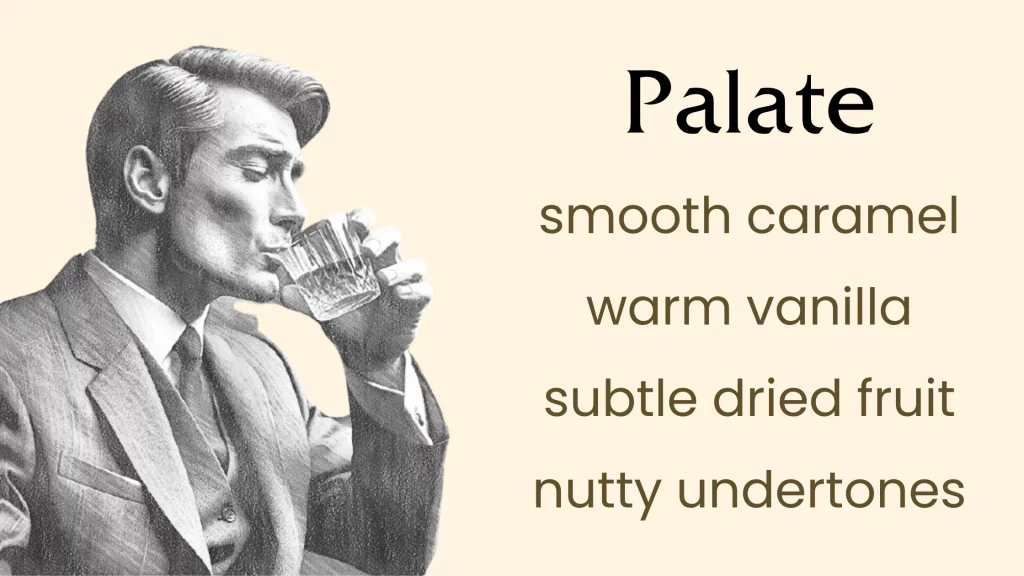
As the tasting continues, a light spiciness from the rye comes through, along with some nutty undertones, providing a nice contrast to the initial sweetness. The oak aging process contributes a hint of depth and complexity to the palate, creating a well-rounded balance of sweet, spicy, and woody flavors, though it remains approachable and not overly intricate.
Finish: What Is The Aftertaste Like?
Analyzing the ‘finish’ or the aftertaste, is the final step of the whiskey tasting process. The aftertaste of Blade and Bow Bourbon is characterized by its smoothness and a pleasantly lingering presence. It skillfully combines a mild warmth from the spice with a gentle, enduring sweetness, reminiscent of the vanilla and caramel flavors experienced earlier. A subtle oakiness, a nod to its time spent in barrels, adds a refined depth to the aftertaste, enhancing the overall finish.
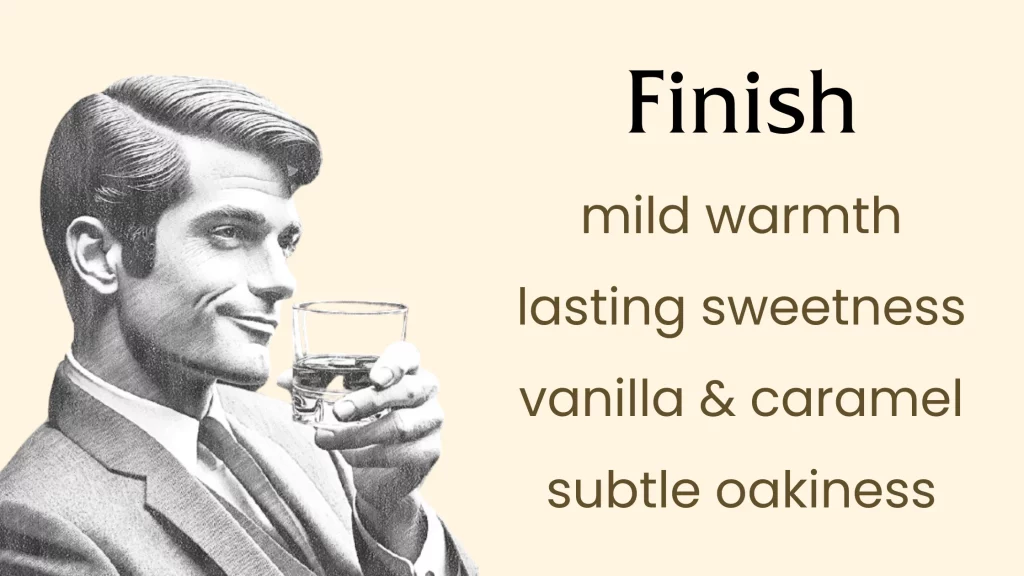
While the finish may not be overly complex or astounding, it is certainly enjoyable and complements the bourbon’s overall tasting profile. It concludes the tasting experience on a note that is both satisfying and reflective of Blade and Bow’s solid quality and craftsmanship.
My Personal Thoughts
Blade and Bow is decent, not extraordinary. It’s more about its storied past than a standout flavor. It’s a good experience, but at its price, there are others I’d prefer. Worth a try for its unique aging process, but might not be a repeat buy.
Flavor Profile
Blade and Bow greets you with an aroma of stone fruits and vanilla, leading to a palate that’s a mix of peaches, honey, and a subtle oakiness. The finish brings a gentle spiciness and a touch of sweetness, but it’s not particularly memorable.
It’s a bourbon that’s pleasant enough, with a light, fruity nose and a sweet, slightly spicy taste. The finish is quick, leaving hints of cherry and vanilla. Overall, it’s a balanced profile, but it doesn’t quite leave a lasting impression in terms of boldness or uniqueness.
Who Would I Recommend It To?
Blade and Bow could be a good pick for those new to bourbon, offering a glimpse into the world of Solera-aged spirits. It’s an interesting choice for its historical value and aging technique. However, for seasoned bourbon lovers seeking depth and complexity, it might fall short, especially considering its price range. It’s comparable to bourbons like 1792 Small Batch, but with a higher price tag. So, it’s a solid option for a casual sip or for those intrigued by its backstory, but there are more compelling choices for connoisseurs.
Awards: What Is It Famous For?
The original Blade and Bow hasn’t snagged any awards, but its 22-year-old sibling sure has. It’s not the one we’re focusing on, but it’s worth mentioning. The Blade and Bow 22-Year-Old Limited Release scooped up “Best Straight Bourbon” and a Double Gold at the San Francisco World Spirits Competition. That’s a big deal and says a lot about the quality they’re putting out.
Now, the standard Blade and Bow, made at the old Stitzel-Weller Distillery, hasn’t made the same waves in terms of awards. But, even without the awards, the standard Blade and Bow’s connection to the Stitzel-Weller legacy and its use of their stock in the blend gives it some street cred in the bourbon world.
Price: How Much Does It Cost?
Blade and Bow Bourbon is definitely seen as a higher-end bourbon, and its price tag reflects that. You’ve got two main types here: the standard Blade & Bow Kentucky Straight Bourbon and the more exclusive Blade & Bow 22-Year-Old.
The standard version is what we’re currently reviewing, and it’s usually priced at around $50 to $55 for a 750 ml bottle. In terms of value, Blade and Bow is a decent introduction to solera aged bourbons, but I feel its price might be more reflective of the brand’s legacy than the bourbon’s actual flavor.
Comparatively, Evan Williams and Maker’s Mark are more affordable, priced around $39 and $30 respectively, offering fruity and vanilla-spice profiles. Knob Creek, at a similar price to Blade and Bow, delivers bolder flavors.
Note: Prices may vary based on location and retailer.
Alcohol Content: What’s The ABV?
Below is a detailed breakdown of Blade and Bow Bourbon’s ABV compared to other notable bourbons, providing a clear perspective on its strength and how it measures up in the bourbon landscape:
| Bourbon Brand | ABV (%) | Notes |
| Blade and Bow | 45.5 | Balanced with a rich profile, suitable for sipping |
| Buffalo Trace | 45 | Smooth, with a complex array of flavors |
| Woodford Reserve | 45.2 | Rich and full-bodied with a deep flavor |
| Maker’s Mark | 45 | Soft and approachable, with a sweet profile |
| Bulleit Bourbon | 45 | High rye content, known for its spice |
Note: ABV percentages are subject to change and may vary slightly by batch.
The Best Ways To Enjoy Blade and Bow Bourbon
Blade and Bow Bourbon, with its intricate flavors and smooth finish, offers a versatile drinking experience that can be savored in numerous ways. For purists, enjoying it neat or with a splash of water can unveil the depth of its character, allowing the bourbon’s complex profile to shine. On the other hand, its rich palate also makes it an excellent base for classic cocktails, where it adds a premium touch to drinks like the Old Fashioned or Manhattan.
Furthermore, Blade and Bow’s nuanced flavors can be further explored through food pairings, with its spicy and sweet notes complementing a wide range of dishes from savory meats to rich desserts. Whether sipped slowly on its own, mixed into a beloved cocktail, or paired with a meal, Blade and Bow Bourbon provides a satisfying experience that celebrates the art of whiskey making.
Food Pairings
To find the best food pairings, it’s best to consult the whiskey flavor wheel. Blade and Bow Bourbon’s rich and complex flavor profile makes it an ideal companion for a variety of food pairings. Here are some specific recommendations:
- Cheese Pairing: Aged Gouda or Manchego cheese, with their nutty and caramel notes, pair splendidly with Blade and Bow, creating a delightful interplay between the creamy textures and the bourbon’s smooth finish.
- Dessert Pairing: Dark chocolate truffles or pecan pie enhance the bourbon’s undertones of dried fruit and spice, offering a luxurious end to any meal.
- Meat Pairing: Smoked brisket or grilled ribeye steak, with their rich and savory flavors, beautifully complement the caramel and vanilla notes of the bourbon.
Cocktails
The depth of Blade and Bow Bourbon adds a sophisticated twist to classic cocktail recipes. Here are two specific cocktails to try.
Old Fashioned
- Ingredients:
- 2 oz Blade and Bow Bourbon
- 1 sugar cube
- Few dashes of Angostura bitters
- Orange peel
- Ice cubes
- Preparation:
- Place the sugar cube in an Old Fashioned glass and saturate with bitters.
- Add a few dashes of plain water and muddle until the sugar is dissolved.
- Fill the glass with ice cubes and add Blade and Bow Bourbon.
- Stir well and garnish with an orange peel.
Manhattan
- Ingredients:
- 2 oz Blade and Bow Bourbon
- 1 oz sweet vermouth
- 2 dashes Angostura bitters
- Maraschino cherry for garnish
- Preparation:
- Add all ingredients into a mixing glass with ice and stir until well-chilled.
- Strain into a chilled cocktail glass.
- Garnish with a maraschino cherry.
Blade and Bow Bourbon vs 1792 Small Batch
Comparing Blade and Bow to 1792 Small Batch, you get two distinct bourbon experiences. Blade and Bow is all about that unique solera aging, which layers in a variety of flavors – a bit of sweetness, some spice, and a hint of woodiness. It’s for those who like a bit of complexity and value a bourbon with a rich backstory.
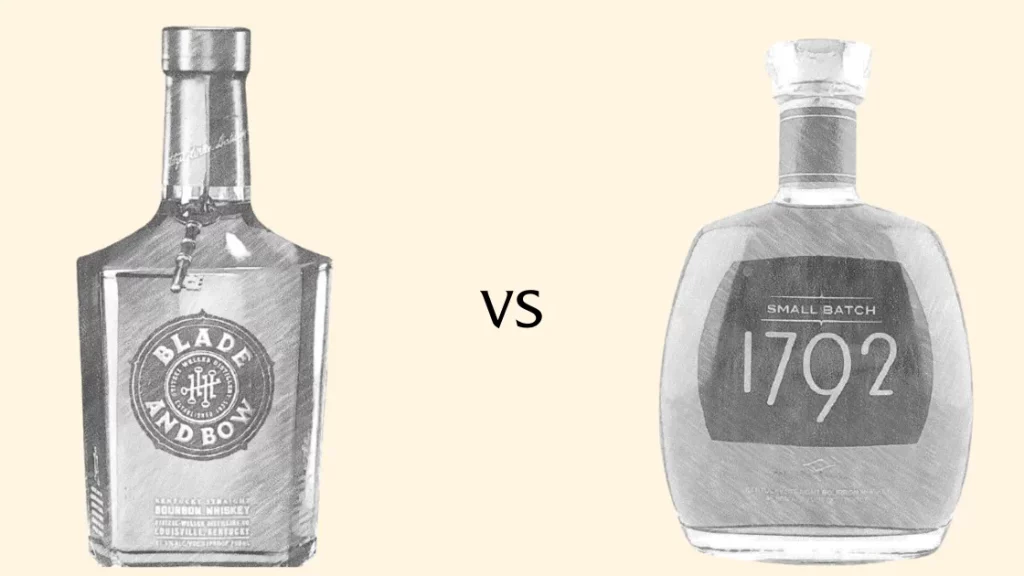
1792 Small Batch, though, goes down a different path. It’s heavy on the rye, so expect a stronger hit of spice, complemented by caramel sweetness and a fruity undertone. It’s a go-to for anyone who loves their bourbon with a more pronounced, spicy profile.
Choosing between them? It’s really about what flavor you’re after. Blade and Bow offers a more intricate taste, while 1792 Small Batch is for those moments when you want something with a bit more kick. Both have their own appeal, fitting different tastes and occasions.

